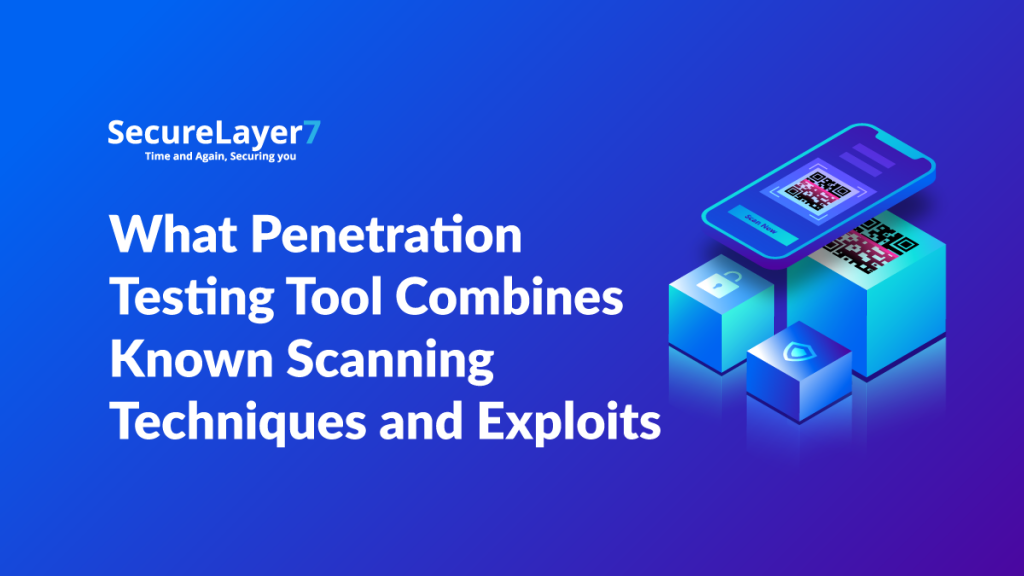
Insecure Deserialization Attack in Python Application
February 9, 2023
Getting Your Phishing Gear Ready With GoPhish
February 10, 2023
Penetration testing is an essential element for securing digital assets. Penetration testing involves the required tools and techniques as per the different methodologies such as Grey box, Black box, and White Box Penetration testing.
This article covers the basics of Metasploit, a penetration testing automated tool that combines known scanning techniques and automatically exploits vulnerable assets.
What is Metasploit?
Metasploit is an automated pentest tool used by security experts as a system for penetration testing and as a platform for developing security tools and exploits. Moreover, to identify the weak point in your system, Metasploit interfaces with numerous reconnaissance tools, including Nmap, SNMP scanning, Windows patch enumeration, and Nessus.
Security engineers and Penetration testing experts can probe networks and applications for vulnerabilities using automated pen-testing tools at any stage of the production and deployment process.
The Metasploit Project’s open-source Ruby framework enables testing using GUI or command-line modifications. Additionally, it can be enhanced using coding to function as an add-on that supports numerous languages.
Metasploit has two main versions:
- Metasploit Pro: Made for the automation and management of tasks with a GUI.
- Metasploit Framework: Open-source command line version.
The Main components of Metasploit are:
- msfconsole: The most popular one-stop shell-like interface for accessing all of Metasploit’s functionality is called msfconsole. As it provides command auto-completion, tabbing, and other bash shortcuts, it features command-line support similar to Linux.
- Modules: The Metasploit supported extra bits of software like an exploit, auxiliary, post-exploitation, and payloads.
- Tools: Metasploit supports a large of tools that enable pentesters to find vulnerabilities. These include msfdb, MsfVenom, Meterpreter, and Armitage.
Also read: Attacking Metasploitable Using Metasploit
Benefits of Penetration Testing Using Metasploit
The following are the benefits of Metasploit.
Open Source
The fact that Metasploit is open source and being actively developed is one of the main arguments for using it. With complete access to the source code and the capacity to install custom modules, Metasploit offers substantial customizability in contrast to many other penetration testing tools.
Smart Payload Generation
Testers can quickly switch payloads with Metasploit’s ‘setpayload’ command. When attempting to compromise a system utilizing shell-based access or meterpreter, Metasploit’s dynamic scripting tool gives you many options. Additionally, the MsfVenom application allows testers to generate shellcodes directly from the command line for manual exploitation.
Clean Exits and Persistency
Even if the target system is not anticipated to restart after the penetration test, Metasploit can nevertheless escape undetected. Additionally, it offers a variety of techniques for gaining ongoing access to a target system.
Visual UI
Several user-friendly GUIs are offered by Metasploit, particularly Armitage. Additionally, these GUIs enable you to perform typical penetration testing tasks by simply clicking a button, including managing vulnerabilities and setting up workspaces.
Advantages and Disadvantages of Metasploit Framework
We now need to be aware of the advantages and disadvantages in order to evaluate the Metasploit.
Advantages
One of its main features is that the Metasploit framework is open source and continually being developed.
Switching between the payloads in Metasploit is a breeze. In Metasploit, there is easy access to altering payloads that use commands. In the Metasploit framework, adding users and gaining remote access to the desktop becomes simpler.
Like Armitage, Metasploit offers a user-friendly GUI in addition to third-party interfaces. These interfaces, which provide various features such as functionalities at a click, simple workspace switching, and vulnerability management, simplify penetration testing projects.
Disadvantages
- Learning the Metasploit Framework is really challenging.
- The framework can cause your system to crash if it is not used properly.
- It is necessary to have more in-depth knowledge of the exploited environment.
What Systems Support Metasploit Framework
The Metasploit framework is compatible with several popular operating systems and browsers because it is open source.
Browsers
- Google Chrome (latest)
- Microsoft Edge (latest)
- Mozilla Firefox (latest)
Operating Systems
- Microsoft Windows (7 SP1+, 8.1, and 10)
- Microsoft Windows Server (2008 R2, 2012 R2, 2016, and 2019)
- Red Hat Enterprise Linux Server (5.10, 6.5, 7.1, and 8 or later)
- Ubuntu Linux (14.04 LTS, 16.04 LTS, and 18.04 LTS)
The Main Modules of Metasploit
The Metasploit Project is a computer security initiative that supports penetration testing and gives information on security flaws. It contains the following main modules:
Auxiliary
Several tools, including fuzzers, scanners, and SQL injection tools, are included in the auxiliary module to help researchers learn more about the target system.
Encoders
In order to shield them from antivirus programs that rely on signatures, encoders encrypt the payloads and vulnerabilities. Payloads or exploits are highly likely to be caught by an antivirus program since they often contain null or undesirable characters.
Exploit
An exploit is a piece of code that uses a target system’s weaknesses to guarantee payload access. The Metasploit module, “exploit” is used to construct and access systems by exploiting the target system’s vulnerabilities. The module issues a string of commands to attack a particular vulnerability in a system or application. Buffer overflows, web application exploits, and code injection are a few examples of exploit modules.
Payload
As previously indicated, payloads assist you in launching an assault on the target system. They will, therefore, either assist you in obtaining an interactive shell or maintain a backdoor, execute a command, load malware, etc. Stageless and staged payloads are the two different types of payloads that Metasploit offers.
Post
You can learn more about the system by using the post-exploitation module. It can assist you in dumping password hashes and searching for user credentials for lateral movement or privilege escalation, for example.
Also read: Recon – An Important Part of Penetration Testing.
Why Using a Penetration Tool Like Metasploit Framework Matters
Before an application or network is used online, the internal penetration test team can find potential vulnerabilities using the Metasploit Framework. But these vulnerabilities could allow bad guys to access it if a flawed application was employed, leading to a network or data breach.
Metasploit penetration testing can also be used to find any software or network flaws. You can look at an example of the usage of Metasploit in such an instance.
Once you’ve located these weaknesses in your organization, you can prioritize patching them up before the bad guys beat you to them.
What repercussions could you encounter if you don’t take action to eliminate vulnerabilities before an adversary discovers and exploits them? Think about the following.
The average cost of a data breach increased by 2.6% from USD 4.24 million in 2021 to USD 4.35 million in 2022. The average cost has climbed 12.7% from USD 3.86 million in the 2020 report.
You could suffer from the following repercussions if your software or network has an undiscovered vulnerability that leads to a data breach:
- Non-compliance issues, penalties & fines.
- Lost relationships and revenue.
- Reputational harm and professional embarrassment.
Cybercriminals have little respect for any organization. Data breaches can happen to any organization, even one that strives to improve humanity, like the Red Cross. However, all organizations should protect themselves and their customers from cybercriminals by deploying a cybersecurity vendor.
Get Protected with SecureLayer7
The manual penetration test methodology used by SecureLayer7 goes beyond the test scenarios listed in the OWASP top 10 SANS and NIST standards. We assist customers in identifying high-risk business vulnerabilities related to authentication, authorization, and business logic that may lead to a data breach.
Businesses and SME organizations employed our application penetration testing services without investing a million dollars in strengthening posture.
Customers can identify security holes and high-risk business vulnerabilities like those found in web applications’ logic, authentication, and authorization using SecureLayer7’s web app pen testing.
SecureLayer7 produces thorough reports after completing the penetration test, which includes an executive summary, test scope, approach, and methodology, OWASP Top 10 Summary, critical findings summary, detailed web app findings, graphical representation of vulnerabilities, recommendations, deep insights, advised prioritization, security advice, and conclusion.
With automated and manual testing to find and address any vulnerabilities posing a security threat to your online application, SecureLayer7 offers full security services. Get in touch with us to see how we can uncover and fix any vulnerabilities in your web applications.


